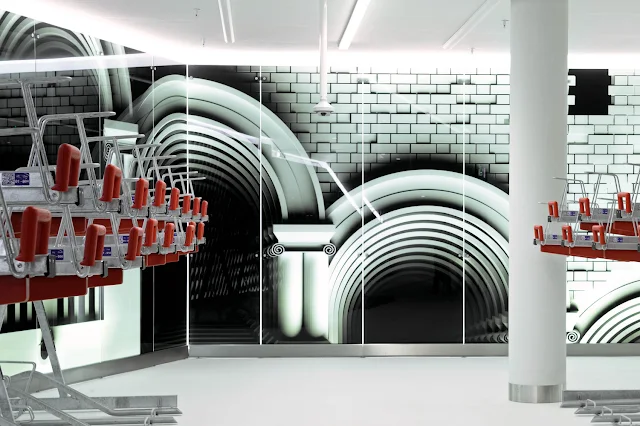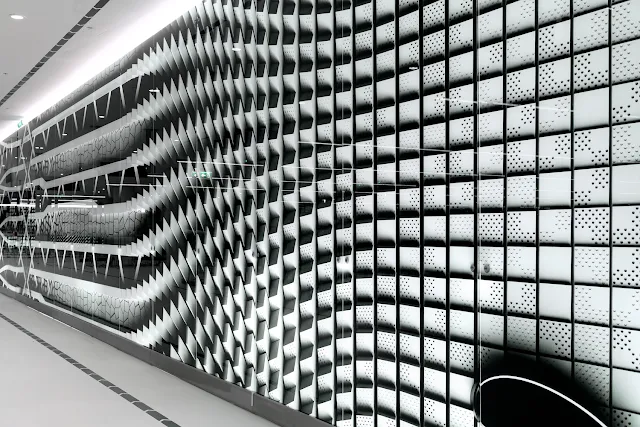One of the largest bicycle parking garages in the Netherlands has been built under the Koningin Julianaplein, right in front of the Central Station in the dutch city The Hague. Silo and Studio Marsman developed a great spatial idea that modifies parking your bike into a museum-like experience. The remarkable result improves convenience and safety for the thousands of everyday users.
The link between bicycle and train is crucial in the urban mobility system. But, underground parking places are often unpleasant due to low ceilings, and the lack of daylight and aspects of the surroundings. With room for about eight thousand bicycles, the Hague's Municipality proposes a service-oriented and future-proof idea.
The vast, light white dome, smart directional indicating, capacious ways, and back-lit glass walls form a surprisingly majestic experience and an outstanding quality level. The combined application of light and spatial integrity makes the parking look more capacious. Moreover, the visual interventions maintain habitual orientation, creating it easier to find back every bike.
The past, present, and future design of The Hague creates the foundation for one unbroken image on the entire light wall that surrounds the parking facility. Facade components of iconic structures are subtly intertwined together into an awe-inspiring urban landscape, a glowing metamorphosis inspired by Dutch graphic artist M.C. Escher. As you cycle past it, you feel the city's skyline in one continuous movement. With more time, you can explore all individual referenced buildings.
The design quotes historic buildings such as the Ridderzaal, the Peace Palace, and the Kunstmuseum by Berlage; projects by esteemed architects such as Richard Meier, Bernard Tschumi, Hans Kollhoff, Cesar Pelli, KPF, Kraaijvanger, Rudy Uytenhaak, Benthem Crouwel Architects, MVSA, Zwarts & Jansma Architects, and OD205; and future projects by Powerhouse Company, JCAU and NOAHH.
Bicycle parking has been built at the beginning of 2020. The final exits will be united into the above-ground structures, designed by Powerhouse Company.











This post may contain affiliate links. As an Amazon Associate, I earn from qualifying purchases.
Comments
Post a Comment